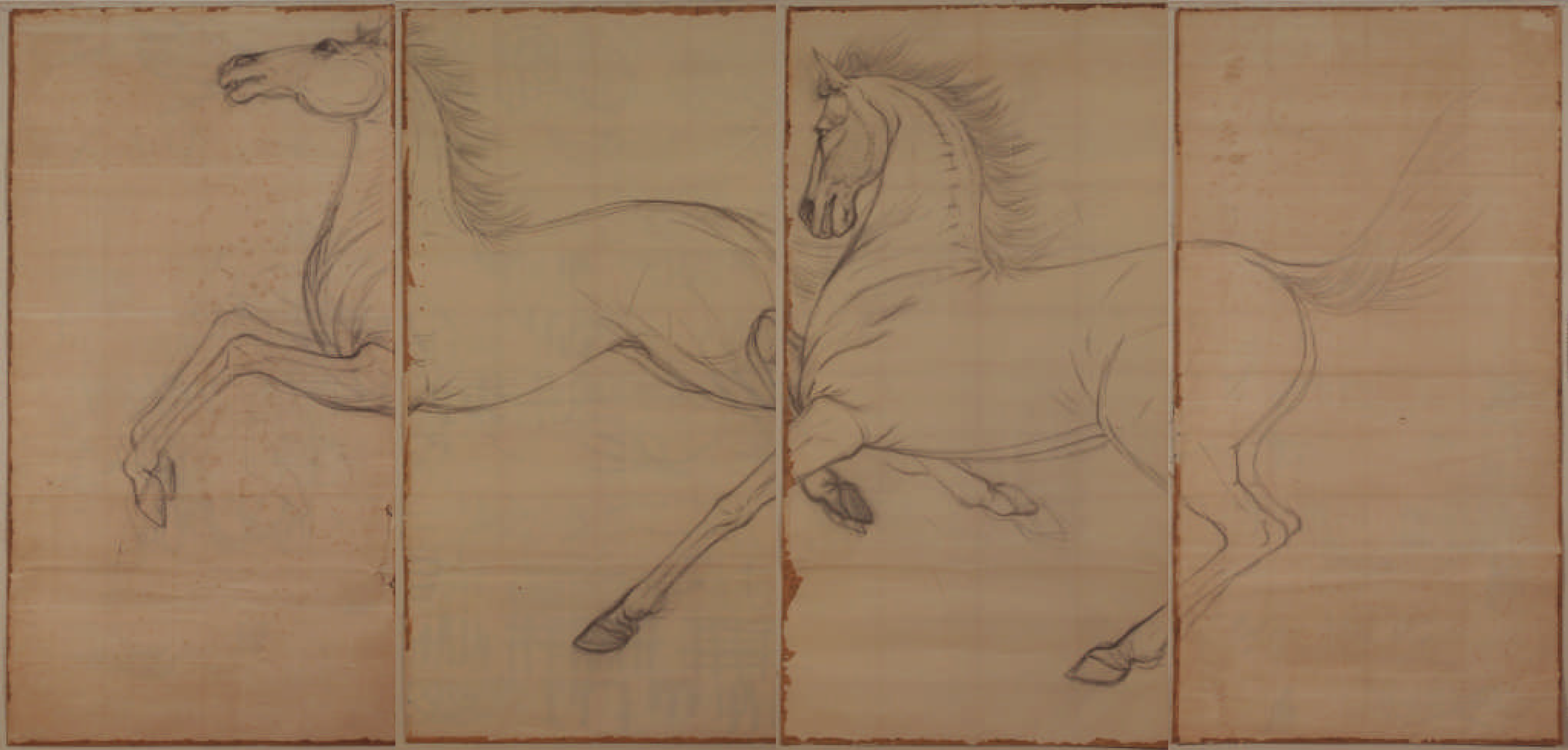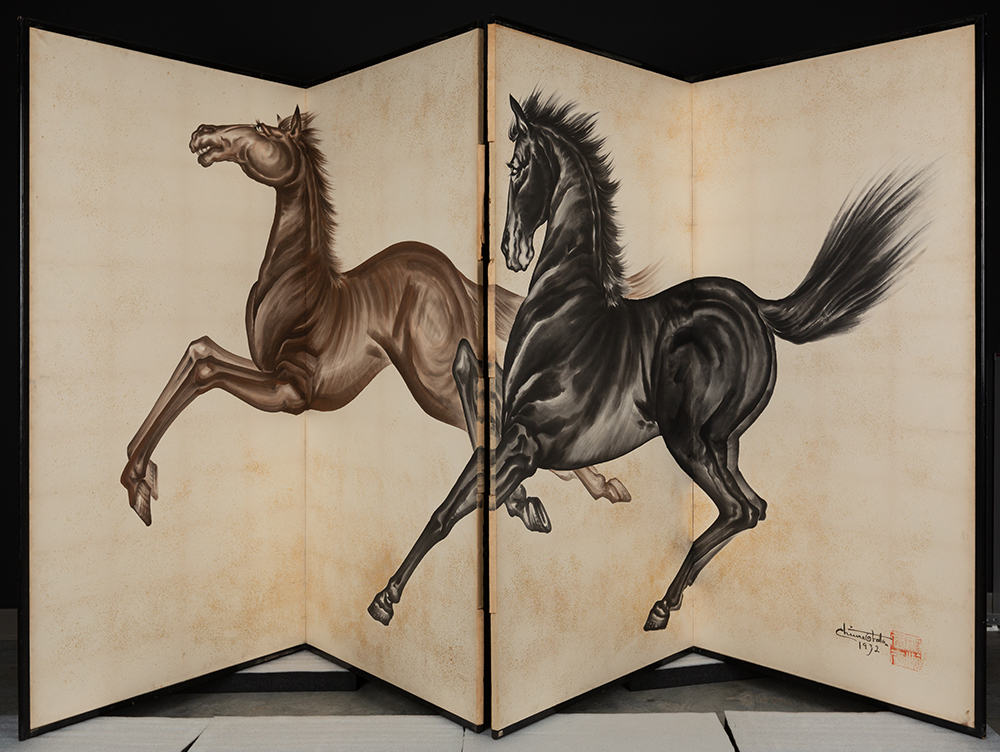UMFA Receives Bank of America Conservation Grant
Funds will be used to conserve underdrawings for Chiura Obata's Two Running Horses
The Utah Museum of Fine Arts (UMFA) at the University of Utah is one of 23 cultural institutions from around the world awarded a 2023 Bank of America Art Conservation Project grant. The grant will fund conservation treatment on drawings discovered within the framework of Chiura Obata’s (1885–1975) Two Running Horses (1932) during conservation efforts also funded by Bank of America in 2022.

The 2022 conservation work by Nishio Conservation Studio (Washington DC) revealed full-size underdrawings for the original "Horses" screen and roughly 50-100 practice sketches within the screen’s frame. With the 2023 funding from Bank of America Nishio will conserve the underdrawings onto new framework. The UMFA plans to display the underdrawings alongside Two Running Horses in 2024.
“We are elated to receive this prestigious and highly competitive support from Bank of America to continue the conservation treatment of this incredible work of art.” said Gretchen Dietrich, The Marcia and John Price Executive Director. “It’s hard to overstate our surprise at the discovery of so many other drawings housed within the original screen, and we’re thrilled to be able to treat each of these drawings and conclude the conservation of the screen in such a complete and compelling way. This is a thrilling story of discovery and rediscovery of works by an incredibly important American artist and we are so delighted to hold these works of art in our collection and share them with our community.”
The surprising discovery within the four-panel screen provides a unique look into Obata’s artistic process, one that blends Eastern traditions with more contemporary and Western subject matter. The screen and the long-hidden drawings demonstrate Obata’s synthesis of Japanese and American art techniques and the artist's mastery of sumi painting.

Fellow 2023 Bank of America Art Conservation Project recipients include Los Angeles County Museum of Art, Musée d’Art Moderne de Paris, and the National Gallery Singapore, among other national and international cultural institutions. Read more about the Bank of America program here.
“The arts bring to life diverse perspectives and voices, and they empower our communities to be able to thrive through education and enrichment,” said Mori Paulsen, President, Bank of America Northern Utah. “Supporting the conservation work at Utah Museum of Fine Arts ensures that residents and visitors alike will be able to access greater cultural understanding and appreciation for generations to come.”
The Bank of America Art Conservation Project provides grants to cultural institutions to conserve historically or culturally significant works of art that are in danger of deterioration, including works that have been designated as national treasures. Since 2010, Bank of America’s Art Conservation Project has supported the conservation of more than 6,000 individual pieces including paintings, sculptures and archaeological and architectural pieces of critical importance to cultural heritage and the history of art.
The Utah Museum of Fine Arts is also a Bank of America Museums on Us® partner. The program provides Bank of America, Merrill and Bank of America Private Bank (U.S. Trust) credit and debit cardholders free general admission to more than 225 cultural attractions across the U.S. on the first full weekend (Saturday and Sunday) of every month.
